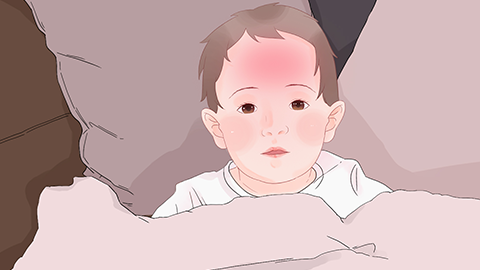How to treat a two-year-old child with a fever of 39°C
Generally speaking, fever refers to an elevated body temperature. A fever of 39°C in a two-year-old child may be caused by environmental overheating, post-exercise heat generation, common cold, acute bronchitis, pneumonia, or other conditions. It is recommended to seek timely medical attention and follow a doctor's guidance regarding general treatment and medication. Detailed explanations are as follows:

1. Environmental Overheating
A baby's body temperature may rise to 39°C due to excessive clothing or high ambient temperatures. In such cases, reducing the baby's clothing and adjusting the indoor temperature usually helps alleviate the condition.
2. Fever After Intense Exercise
Following vigorous physical activity, a baby's body may generate increased heat, temporarily raising body temperature to 39°C. It is advisable to avoid allowing the baby to engage in strenuous activity in hot environments and to provide adequate rest and hydration after exercise.
3. Common Cold
A common cold is typically caused by viral or bacterial infections. When viruses invade the body, the baby's immune system identifies them and initiates a defense response, raising the body's temperature set point and causing fever, with temperatures rising to 39°C. Symptoms may include coughing and a runny nose. Medications such as pediatric paracetamol and chlorpheniramine granules, paracetamol suspension drops, and oral liquid preparations like Pudilan Xiaoyan may be used under medical guidance.
4. Acute Bronchitis
Acute bronchitis is usually caused by viral or bacterial infections. Pathogens multiply within the bronchi, releasing toxins and inflammatory mediators that irritate surrounding tissues and nerve endings, triggering localized inflammatory responses. The immune system becomes activated, producing systemic symptoms such as fever, with body temperatures generally ranging between 38°C and 39°C, and sometimes exceeding 39°C in severe cases. Symptoms often include worsening cough and sputum production. Symptomatic relief can be obtained using medications such as ambroxol oral solution, cefaclor dry suspension, and ibuprofen suspension under a doctor's supervision.
5. Pneumonia
Pneumonia can be caused by infections from viruses, bacteria, mycoplasma, and other pathogens. These pathogens enter the lungs through the respiratory tract and multiply in areas such as the alveoli and bronchi, causing pulmonary inflammation and sustained elevation in body temperature, often exceeding 39°C. Symptoms may include dry cough, wheezing, and rapid breathing. Treatment options under medical supervision may include acyclovir capsules, cefalexin and trimethoprim tablets, and ribavirin tablets.
During recovery, ensure the baby gets adequate rest, avoids strenuous activity, and drinks plenty of water to aid in recovery.




